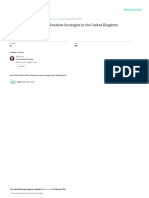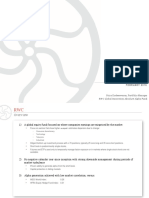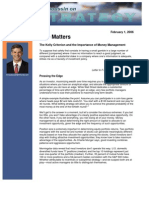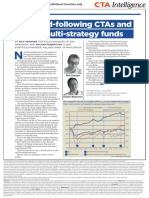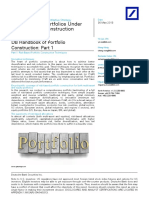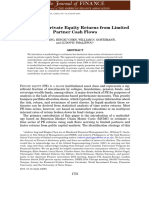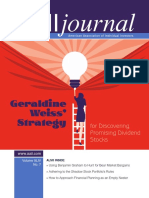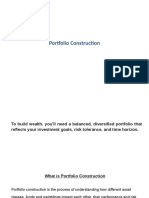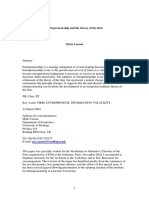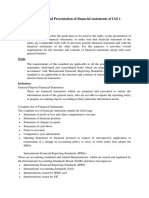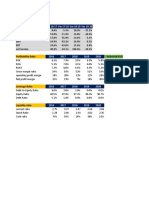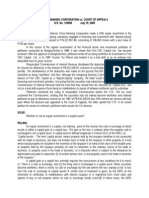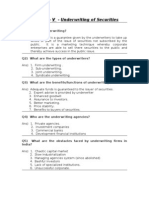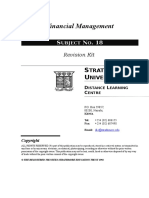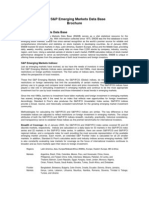Dynamic Investment Solutions
Dynamic asset allocation
Balancing risk and reward through the market cycle
�Dynamic asset allocation
Asset allocation is the key to return outcomes
Just as the global financial crisis highlighted some serious flaws in developed world economies, it also revealed the shortcomings of adopting static asset allocations. Since 1986, academic research has shown that asset allocations are the most important aspect of portfolio management. While the search for alpha may be the most captivating, between 75% and 100% of fund returns are directly related to asset allocation decisions. Maximising a portfolio's ability to meet defined investment objectives is all about setting the appropriate asset allocation. It is common for fund fiduciaries to review investment objectives and fund asset allocations on a relatively infrequent basis and, once these are set, manage the fund to a static asset allocation. In a static environment, where return expectations are stable and new asset class opportunities are scarce, the concept of a central asset allocation that remains unchanged for extended periods may be acceptable. However, in todays ever-changing investment landscape and with significant industry evolution, there is now a need to frequently revise asset allocations. The correct asset allocation at any point in time is the one that maximises the chances of achieving the funds investment objectives. Periods of very strong returns are often followed by periods of very weak returns, and vice versa. For example, the ASX200 returned 28.7% for the financial year ended 30 June 2007 and -13.4% to 30 June 2008. QICs dynamic asset allocation (DAA) process improves on static asset allocations by responding to valuation signals. Through DAA, the asset allocation mix of our clients' portfolios is adjusted in response to changing market prices and our proprietary estimates of fair value. Allocations are managed within pre-approved ranges that allow portfolio risk to be increased or decreased in response to changing economic risks.
DAA is an asset allocation process that responds to valuation signals. Rigorous process with strong governance
However, managing DAA is not simply about picking markets that may be under- or overvalued, nor is it about timing market movements. The effective management of a portfolio using DAA requires the following elements: 1. A strong governance process that is well understood and endorsed by the whole Trustee Board. A rigorous decision-making process that is centred on achieving long-term investment objectives and managing the risk of failing to meet those objectives, rather than trying to increase short-term returns. It must be structured on sound investment fundamentals, with the determination of fair value applied consistently across asset classes. It must be able to be implemented.
2.
The correct asset allocation at any point in time is the one that maximises the chances of portfolios achieving the investment objectives of the fund. Adjusting weights in real time to benefit from current market conditions
As market prices change, so too does the risk/reward trade-off from holding a particular asset class or asset allocation.
3.
4.
Page 2
�The QIC dynamic asset allocation process
The QIC DAA process combines top-down macroeconomic analysis with a bottom-up understanding of the key drivers of each asset class and applies these views to portfolios through an Investment Scorecard approach. The overall process is illustrated in Diagram 1. Diagram 1: Meeting Client Objectives
Client Objectives
Risk Return Peers Liabilities
Find & Access Better Beta
Source Information Analysis & Review Recommendation
Portfolio Design
Investment Scorecard Strategy Model Fundamental Analysis Scenario modelling Risk Management
Portfolio Management
Implementation Mandates Tax Efficiency Portfolio Management DAA
Meeting Client Objectives
Investment Scorecard
Investment Scorecard
All investment portfolios have investment objectives. However, these objectives are often unquantifiable, unstated and do not include all of the objectives for all of the funds stakeholders. For example, most superannuation funds aim to achieve a return that is above inflation (e.g. CPI + 3% p.a.) with minimal risk. However, risk objectives tend to remain unquantified, and other objectives or expectations (e.g. the desired performance characteristics in down markets) remain undocumented. The Investment Scorecard documents and prioritises all of the investment objectives of the funds stakeholders in a quantifiable way. It serves as a transparent framework that highlights the often conflicting nature of investment objectives and allows the portfolio manager to understand and ultimately manage the trade-offs that investors face.
The Investment Scorecard documents and prioritises all of the investment objectives of the funds stakeholders in a quantifiable way.
Specifically, the Investment Scorecard gives four measures of success for each objective: excellent result, good result, poor result and failure. The impact of moving towards a new asset allocation is assessed with reference to the effect on each objective as well as the relative priority of each objective. The Scorecard can also be used to assess how asset allocations will perform under different scenarios. An example of an Investment Scorecard is shown in Diagram 2.
Page 3
�Diagram 2: Example Investment Scorecard
Current Asset Allocation Proposed Asset Allocation
Excellent
Investment Scorecard Objectives Probability of CPI + 4% p.a. over rolling 5 years Probability of a negative return of 1 year Probability of 1st quartile performance vs peers Probability of 1st quartile performance in down markets Fund liquidity
Scorecard
Good Poor Fail
1 1 2 2 3
Finding and accessing better beta asset class research
The building blocks of a diversified portfolio are the asset classes that make up the portfolio. QIC undertakes extensive research to determine the existence of a sustainable long-term risk premium for a group of assets or asset class. If the existence of this risk premium can be proven, the asset class may be included in multi-asset class portfolios, subject to the diversification benefits it provides.
The QIC Strategy Model is a quantitative tool that generates expected future returns from asset classes and portfolios.
The model is based on a number of established relationships between economic variables, such as inflation, interest rates and economic growth, with the expected returns from various asset classes or markets. These relationships provide a means for incorporating current market conditions into future expectations, which the model then uses to generate a distribution of possible future return paths. The distribution of these return paths provides an indication of the likely returns that can be expected from various markets and, as a result, the likely return from a portfolio of asset classes.
QIC undertakes extensive research to determine the existence of a sustainable long-term risk premium.
Our asset class research seeks to determine the core characteristics of each asset class and, in particular, how its investment returns are expected to vary with changes to the underlying rates of inflation, economic growth and interest rates. This provides the basis for understanding the fair value of asset classes and how this may change through a range of economic scenarios.
The results are shown on an Investment Scorecard, which illustrates the impact of different asset allocations or scenarios on the achievement of the objectives.
The results from the QIC Strategy Model can be plotted on the Investment Scorecard, so you can easily see how future economic scenarios impact the achievement of investment objectives. This also provides the ability to test alternative asset allocations to improve the chance of meeting objectives.
The QIC Strategy Model bringing it all together
Once you have a thorough understanding of the drivers of each asset class and a documented set of investment objectives, you need to bring these elements together to form an asset allocation. QIC uses a proprietary investment model, known as the QIC Strategy Model, which simulates the possible distributions of future returns from investment markets.
Page 4
Priority
�Generating entire distributions of asset class and portfolio returns also enables QIC to perform superior top-down risk management. This includes identifying common sources of return drivers across asset classes, changes to correlations across time, and portfolio properties in the tails of the distributions.
How did the DAA process work through the global financial crisis?
The global financial crisis (GFC) was a very effective stress test for investment processes, and it served to highlight the real benefits of a DAA process through a period where valuations changed significantly. Consider a typical balanced fund with an asset allocation of 70% in growth assets and 30% in defensive assets in December 2007. At that time, equity returns had rallied strongly for some years and interest rates were high following several years of strong economic growth. As such, expected future returns were relatively low for equities but high for government bonds. This is reflected in our forecasts for portfolio performance, as shown in Diagram 3, after rerunning our models for the hypothetical balanced portfolio.
But does it work?
The potential benefits of altering long-run asset allocations depend on how much the fund is prepared to move allocations within designated ranges. QIC has operated a DAA process for a number of clients since 2006 and in this time has added between 3% and 4% p.a. in returns. While this has been a significant source of value-add, it should be considered in context. The DAA process aims to manage risk. The value-add in returns should therefore be considered as the value that would have been lost through a static asset allocation process. Diagram 3 December 2007 Return Expectations
190%
Cumulative Return
The equity bull market of 20032007 drove historic performance above long-term averages...
Expected 5-year return of CPI + 1.7% p.a.
90%
this led to weak forecasts for future returns from a traditional asset allocation.
-10% Jan-03 Jan-05 Jan-07 Jan-09 Jan-11 Jan-13 Jan-15
Historical Returns for a Traditional Portfolio Median Return Forecast
2 Standard Deviation Return Forecasts Reference Return (7.5% p.a.)
Page 5
�The red line in Diagram 3 shows the cumulative long-term return of 7.5% as a reference point. The dark grey line shows how the bull market of 2003-2007 drove investors returns well above the reference return. Our modelling indicated that the expected future returns for the portfolio were within the upper and lower light grey lines in the chart, but would trend back towards the cumulative 7.5% return. It also indicated that the expected return over the next five years would be approximately CPI + 1.7% p.a. (the dotted line), which would be insufficient to meet typical long-term objectives. Diagram 4 December 2008 Return Expectations
Given our forecasts of relative asset returns, by December 2007 our DAA process had shifted asset weights in our clients portfolios away from equities and into government bonds to protect future returns. Fast forward twelve months to December 2008, and equity markets and interest rates had fallen to multi-year lows. At this point, expected future returns were higher for equities and lower for government bonds, which is reflected in our forecasts as shown in Diagram 4.
190%
Expected 5-year return of CPI + 4.7% p.a.
Cumulative Return
The equity bear market of 2008 drove historic performance well below long-term averages...
90%
this led to strong forecasts for future returns from a traditional asset allocation.
-10% Jan-03 Jan-05 Jan-07 Jan-09 Jan-11 Jan-13 Jan-15
Historical Returns for a Traditional Portfolio Median Return Forecast
2 Standard Deviation Return Forecasts Reference Return (7.5% p.a.)
Diagram 4 shows that in December 2008, the portfolios returns (the dark grey line) would have been driven well below the reference return, and the expected future return for the portfolio was approximately CPI + 4.7% p.a. (the dotted line). By this point, our DAA process had shifted asset weights back towards equities. This allowed our clients portfolios to benefit from the recent recovery in risky assets.
The movement in asset class weights through time is best illustrated in Diagram 5. The red line in Diagram 5 shows the movement in Australian equity markets since 30 June 2006, which is when QICs DAA process commenced. The grey section shows the average changes in Australian equity weights held by our growthoriented clients over the same period.
Page 6
�These asset allocation movements have removed much of the risk of extreme valuation points for our clients and resulted in their portfolio returns following a smoother pattern through time.
This result is surely in the best interests of all stakeholders and particularly superannuation fund members, who can be adversely affected if their retirement coincides with a point of extreme market valuation.
Diagram 5 DAA positions through time
2%
As equities rallied through 2006-2007, our DAA process moved the portfolio into defensive assets.
50% 40% 30% 20%
Average Change in Portfolio Weights
1%
0%
Return
-1%
As equities fell, expectations of future returns increased, allowing the portfolio to benefit from the subsequent rally.
10% 0% -10% -20%
-2%
-3%
-4% Dec-06 Dec-07 Dec-08 Sep-06 Sep-07 Sep-08 Mar-07 Mar-08 Mar-09 Sep-09 Jun-06 Jun-07 Jun-08 Jun-09
-30%
Average Change in Australian Equities Portfolio Weight (lhs)
ASX200 Cumulative Return (rhs)
More information
For more information about QICs DAA process and how it could benefit your fund, please contact Clayton Sills, Director Strategy on +61 2 9347 3344 or via email at c.sills@qic.com.
QIC Limited ACN 130 539 123 (QIC) is a company government owned corporation constituted under the Queensland Investment Corporation Act 1991 (Qld). QIC is regulated by State Government legislation pertaining to government owned corporations in addition to the Corporations Act 2001(Cth) (Corporations Act). QIC does not hold an Australian financial services (AFS) licence and certain provisions (including the financial product disclosure provisions) of the Corporations Act do not apply to QIC. Please note however that some wholly owned subsidiaries of QIC have been issued with an AFS licence and are required to comply with the Corporations Act. QIC, its subsidiaries, associated entities, their directors, employees and representatives (the QIC Parties) do not warrant the accuracy or completeness of the information contained in this document (the Information). To the extent permitted by law, the QIC Parties disclaim all responsibility and liability for any loss or damage of any nature whatsoever which may be suffered by any person directly or indirectly through relying on the Information, whether that loss or damage is caused by any fault or negligence of the QIC Parties or otherwise. The Information is not intended to constitute advice and persons should seek professional advice before relying on the Information. Copyright QIC Limited, Australia 2009. All rights are reserved. Do not copy, disseminate or use, except in accordance with the prior written consent of QIC.
7












